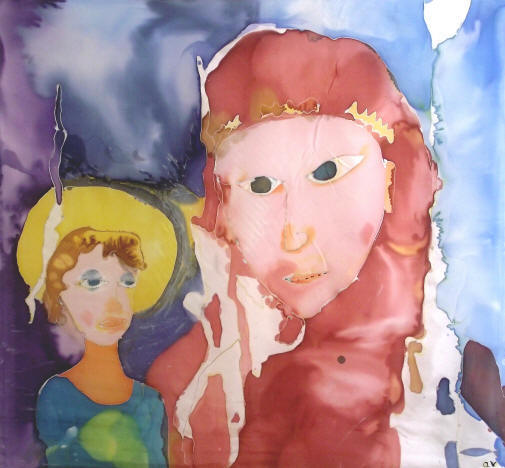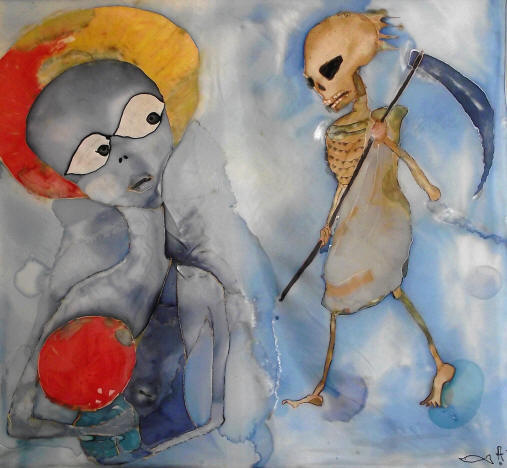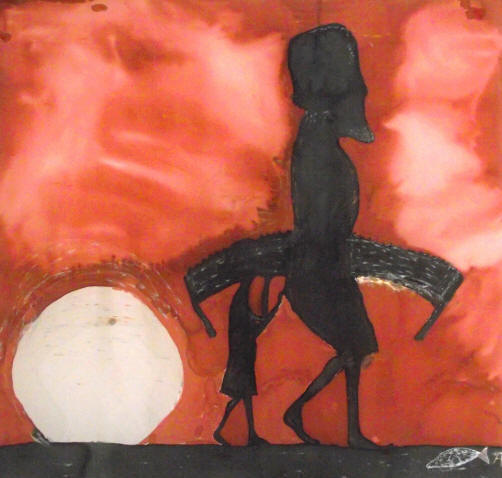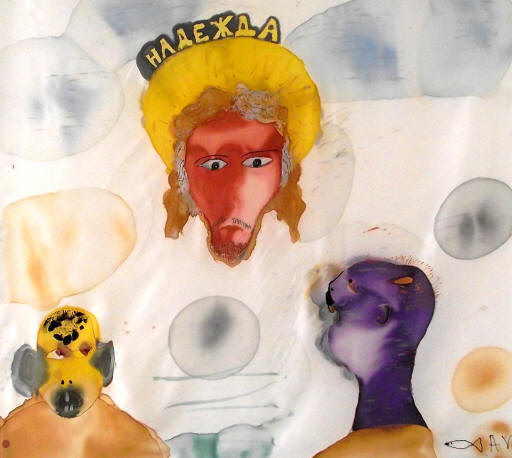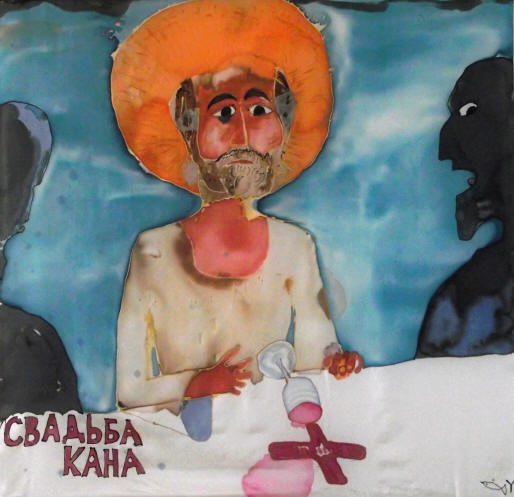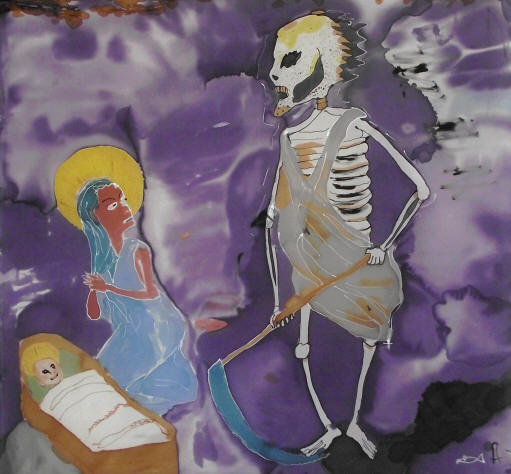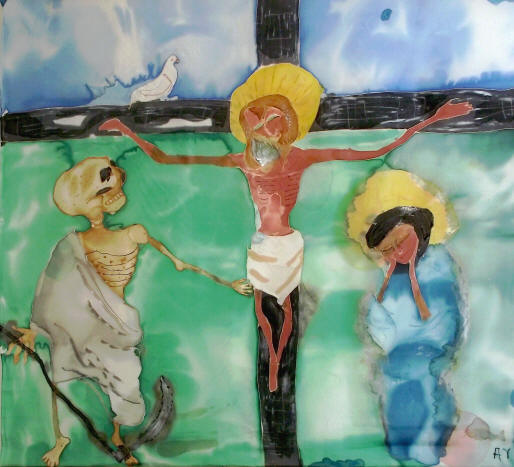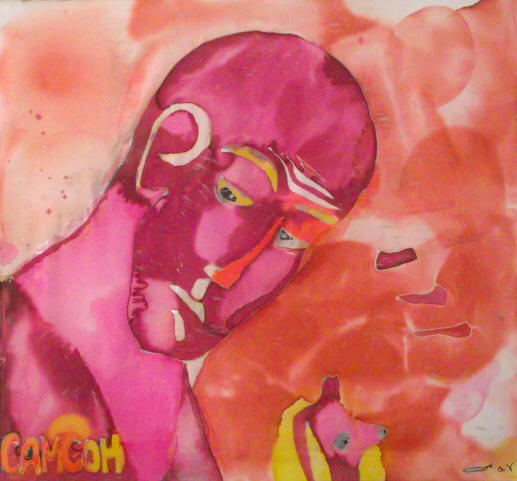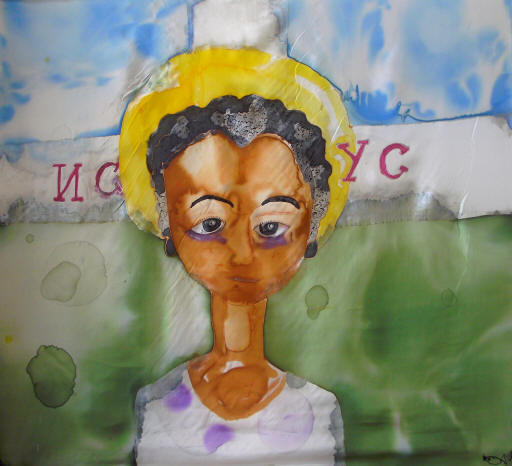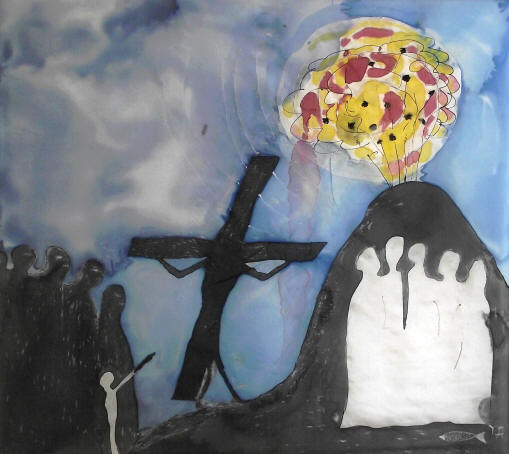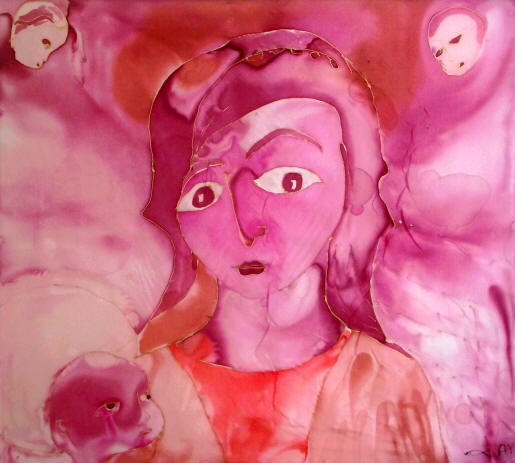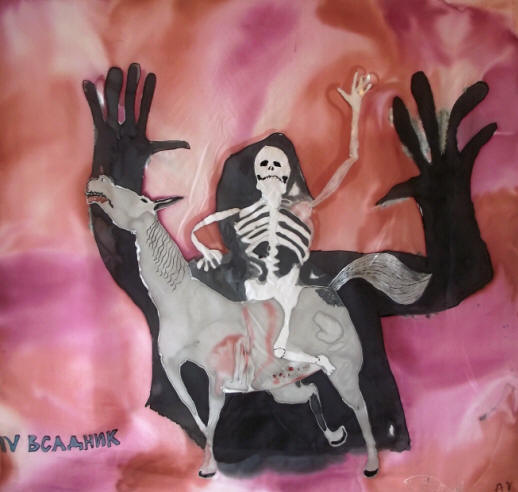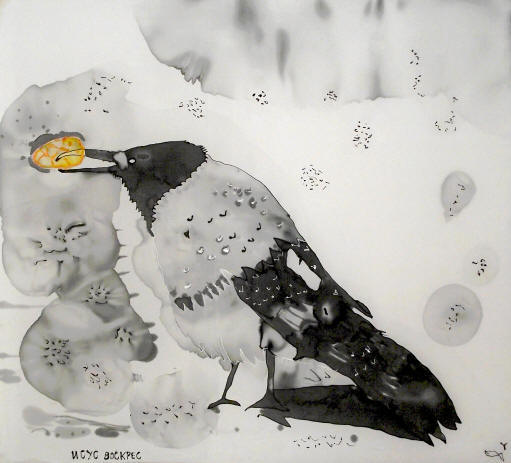|
Icons on Silk
|
||||
|
Pieta
|
||||
|
Sügav
|
||||
|
|
||||
|
Miks? |
||||
|
Töö
Ootab
|
||||
|
Maine Piim
|
||||
|
Ristija Johannes
|
||||
|
Ainus Lootus
|
||||
|
Kaana Pulm
|
||||
|
Muie
|
||||
|
Kumb Tee?
|
||||
|
Simson
|
||||
|
Räägi
|
||||
|
Show
|
||||
|
Mida?
|
||||
|
Neljas Ratsanik
|
||||
|
Pere
|
||||
|
Ülestõus
|
||||
|
Jaanus Ermann became an artist after an unexpected injury that limited his physical activity. He is untrained in painting, but he soon discovered that working with pigments on silk was a medium that both challenged and satisfied him. His subject matter has been varied, but he focuses primarily on imaginative interpretations of historical situations not usually considered art-worthy. He was recently introduced to the art of the icon from the Christian Orthodox tradition; he was fascinated by it and since then Ermann has produced nearly 30 unique interpretations of traditional icon subjects. He challenges the millennia-old protocols of icon painting which are strict and unbending. The images which seem to be familiar at first glance, are in possession of twists and nuances that break open traditional meanings. Not only does he play freely with the subject matter, but the liquid, unsubstantial feel of his paintings further defy the dogmas of icon-making. Silk is in radical contrast with the rigidity of icon's normal stiff ground of metal and wood. The result is a fresh and energetic body of images unfamiliar to either the churchly insider or the art critic and aficionado. Whether the Church is interested in such interpretations is beside the point. Ermann has produced a body of work that creates a new category of sacred art. Ermann lives and works in a small village in northwestern Estonia.
Jaanus Ermann at Ohukotsu, 2011 +
|
||||
|
(The first title shown is in Estonian language; the English translation is below it in italics) Premier
exhibit at the Kondas Museum of Naive Art in Viljandi, Estonia
T Imagi Gallery |
||||
|
|
